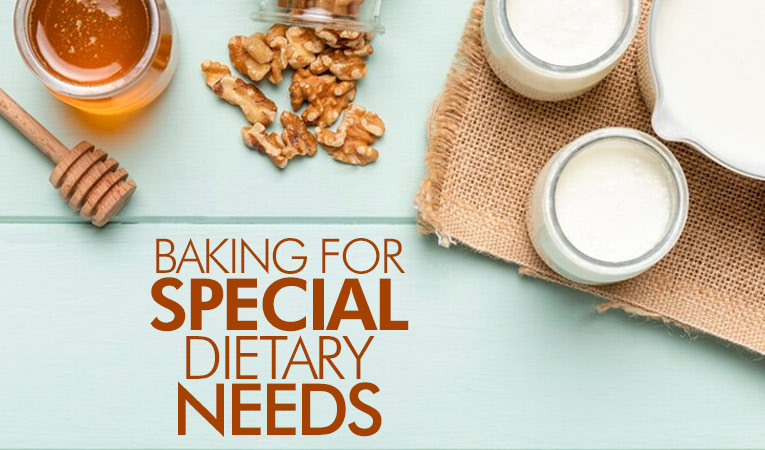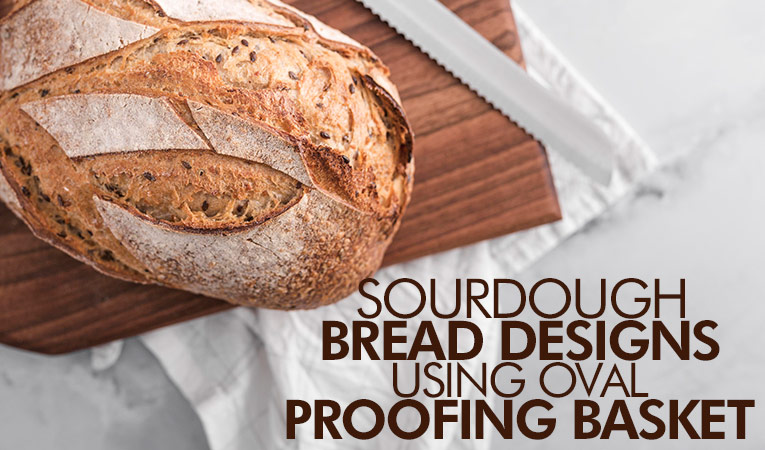Baking for Special Dietary Needs: Gluten-Free, Dairy-Free, and More
07-06-2023

Baking is a delightful culinary art that brings joy to many. However, for individuals with special dietary needs, such as gluten intolerance, dairy allergies, or specific dietary restrictions, traditional baking recipes may not fit their requirements. That's where baking for special dietary needs comes in. It is an essential skill that allows us to create delicious treats that are safe and enjoyable for everyone, regardless of their dietary restrictions.
In this comprehensive blog post, we will explore the importance of baking for special dietary needs and why it matters. We'll delve into the reasons why individuals seek out special dietary baking, whether it's for health reasons, ethical choices, or personal preferences. We will also discuss the popular ingredients used in special dietary baking, including gluten-free flours, dairy alternatives, and egg substitutes.
Furthermore, we will provide a handy substitution chart that outlines how to replace common baking ingredients with special dietary alternatives, ensuring that you can successfully adapt recipes to meet specific needs. Additionally, we will share valuable tips and tricks for successful ingredient substitutions, helping you achieve the perfect texture, taste, and consistency in your baked goods.
Join us on this journey of baking for special dietary needs and discover how you can create delicious treats that accommodate various dietary restrictions without compromising on flavor or enjoyment.
Essential Considerations for Baking with Special Dietary Needs
Baking for special dietary needs requires attention to detail and careful consideration of specific ingredients. Here are key points to keep in mind for successful baking that caters to special dietary requirements.
- Understand the dietary restrictions: Familiarize yourself with the specific dietary restrictions and needs of the individuals you are baking for. This could include gluten intolerance, dairy allergies, nut allergies, or other dietary concerns.
- Use alternative flours and binders: Replace traditional wheat flour with gluten-free flours like almond flour, rice flour, or oat flour. Incorporate binders like xanthan gum or psyllium husk to improve texture and structure in gluten-free baking.
- Explore dairy-free options: Replace dairy milk, butter, and yogurt with plant-based alternatives such as almond milk, coconut oil, or dairy-free margarine. These options are ideal for lactose-intolerant individuals or those following a vegan diet.
- Experiment with egg substitutes: Find suitable egg replacements for those with egg allergies or following a vegan diet. Common substitutes include applesauce, mashed bananas, flaxseed meal, or commercial egg replacers.
- Be cautious with cross-contamination: If baking for someone with severe food allergies, ensure your utensils, baking pans, and surfaces are thoroughly cleaned to prevent cross-contamination. Separate ingredients and tools should be used to avoid any potential allergen exposure.
- Pay attention to ingredient labels: When purchasing pre-packaged ingredients, carefully read labels to ensure they are free from allergens or meet the specific dietary requirements. Look out for hidden sources of gluten, dairy, or other allergens.
- Test and adjust recipes: Baking for special dietary needs may require adjustments to traditional recipes. Start by trying established recipes specifically designed for gluten-free, dairy-free, or other dietary requirements. Take note of any modifications needed for future reference.
Remember, baking for special dietary needs requires patience, practice, and an understanding of the specific requirements. With careful attention to ingredients and techniques, you can create delightful baked goods that accommodate various dietary needs while still being deliciously satisfying.
Popular Ingredients for Baking for Special Dietary Needs
When it comes to baking for special dietary needs, several ingredients are commonly used as substitutes for traditional baking ingredients. Here are some popular choices:
- Gluten-Free Flour Mix: When baking gluten-free, combining almond flour, rice flour, and tapioca flour/starch in different ratios can create a versatile flour blend that mimics the texture and structure of wheat flour. Experiment with different ratios to find the right balance for your recipes, ensuring a delightful gluten-free result.
- Coconut Oil and Vegan Butter: For dairy-free baking, coconut oil and vegan butter are excellent substitutes for dairy-based butter. Use an equal amount of coconut oil or vegan butter as specified in the recipe to maintain the desired moisture and texture in your baked goods.
- Plant-Based Milk: Almond milk, soy milk, and oat milk serve as wonderful alternatives to dairy milk in baking. Use the same quantity of plant-based milk as specified in the recipe to ensure the right consistency and flavor in your treats.
- Egg Replacements: When seeking vegan or egg-free options, applesauce, mashed bananas, flaxseed meal, and chia seeds mixed with water are commonly used as egg substitutes. For each egg required, substitute 1/4 cup of the chosen ingredient to provide moisture and binding properties to your recipes.
- Natural Sweeteners: To opt for healthier alternatives to refined sugar, consider using maple syrup, honey, or agave nectar. Substitute 3/4 to 1 cup of natural sweetener for every 1 cup of sugar, adjusting the amount based on desired sweetness and moisture content in your baked goods. Enjoy the natural flavors and benefits these sweeteners bring to your recipes.
Substitution Chart for Baking Ingredients
To assist you further, here's a handy substitution chart to guide your baking adventures:
| Common Ingredient | Dietary Alternative | Cups | Grams |
|---|---|---|---|
| All-Purpose Flour | Gluten-Free Flour Blend | 1 cup | 140 g |
| Butter | Coconut Oil, Vegan Butter | 1 cup | 227 g |
| Granulated Sugar | Coconut Sugar, Maple Syrup, Honey | 1 cup | 200 g |
| Eggs | Flaxseed Meal (Egg Substitute) | 1 tbsp + 3 tbsp water | 7 g + 45 g |
| Milk | Almond Milk, Soy Milk, Oat Milk | 1 cup | 240 g |
| Baking Powder | Gluten-Free Baking Powder | 1 tsp | 4 g |
| Baking Soda | Gluten-Free Baking Soda | 1/2 tsp | 2.5 g |
| Chocolate Chips | Dairy-Free Chocolate Chips | 1 cup | 170 g |
Note: The measurements provided in the table are approximate. For the best results, we recommend experimenting with the recipe or consulting an expert baker for guidance.
Tips and Tricks for Successful Ingredient Substitutions
- Start with reliable recipes: When baking for special dietary needs, it's best to begin with trusted recipes specifically designed for those dietary restrictions. These recipes have already been tested and perfected, increasing your chances of success.
- Follow ratios and proportions: While substituting ingredients, it's important to maintain the proper ratios and proportions to achieve the desired texture and consistency. Experimentation may be required, so keep notes for future reference.
- Adjust liquid and binding agents: Gluten-free flours often require additional liquid or binding agents compared to traditional wheat flour. Pay attention to the texture of the batter or dough and make necessary adjustments.
- Consider the flavor profile: Substituting ingredients can alter the taste of the final product. Consider the flavors of the substitute ingredients and how they complement the overall taste of the baked goods.
- Keep an open mind: Embrace the uniqueness of special dietary baking. It may not always turn out exactly like traditional recipes, but it can still be incredibly delicious and satisfying in its own way.
Conclusion
We hope this guide to baking for special dietary needs has provided you with valuable insights and useful information. By accommodating various dietary restrictions, you can create delectable baked goods that cater to everyone's needs. Remember, experimentation is key, so don't be afraid to try new ingredients and techniques. If you have any additional tips or experiences to share, or if you enjoyed this blog, we would love to hear from you. Leave a comment below and let us know your thoughts. Happy baking!





